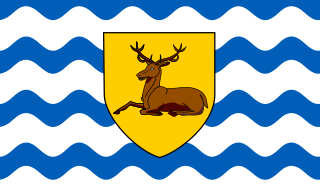
Hertfordshire is one of the home counties in southern England. It borders Bedfordshire and Cambridgeshire to the north, Essex to the east, Greater London to the south, and Buckinghamshire to the west. For government statistical purposes, it forms part of the East of England region.

St Albans is a cathedral city in Hertfordshire, England, east of Hemel Hempstead and west of Hatfield, 20 miles (32 km) north-west of London, 8 miles (13 km) south-west of Welwyn Garden City and 11 miles (18 km) south-east of Luton. St Albans was the first major town on the old Roman road of Watling Street for travellers heading north and became the city of Verulamium. It is within the London commuter belt and the Greater London Built-up Area.

Middlesex is a historic county in southeast England. Its area is almost entirely within the wider urbanised area of London and mostly within the ceremonial county of Greater London, with small sections in neighbouring ceremonial counties. Three rivers provide most of the county's boundaries; the Thames in the south, the Lea to the east and the Colne to the west. A line of hills forms the northern boundary with Hertfordshire.
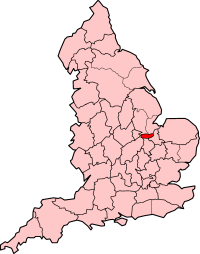
The Soke of Peterborough is a historic area of England associated with the City and Diocese of Peterborough, but considered part of Northamptonshire. The Soke was also described as the Liberty of Peterborough, or Nassaburgh hundred, and comprised, besides Peterborough, about thirty parishes.

The Bishop of St Albans is the Ordinary of the Church of England's Diocese of St Albans in the Province of Canterbury. The bishop is supported in his work by two suffragan bishops, the Bishop of Hertford and the Bishop of Bedford, and three archdeacons.

Hertfordshire is an English county, founded in the Norse–Saxon wars of the 9th century, and developed through commerce serving London. It is a land-locked county that was several times the seat of Parliament. From origins in brewing and papermaking, through aircraft manufacture, the county has developed a wider range of industry in which pharmaceuticals, financial services and film-making are prominent. Today, with a population slightly over 1 million, Hertfordshire services, industry and commerce dominate the economy, with fewer than 2000 people working in agriculture, forestry and fishing.

The Diocese of St Albans forms part of the Province of Canterbury in England and is part of the wider Church of England, in turn part of the worldwide Anglican Communion.

St Albans is a constituency represented in the House of Commons of the UK Parliament since 2019 by Daisy Cooper, a Liberal Democrat.
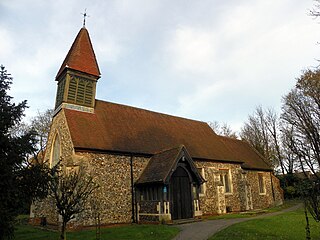
Shephall is part of the town of Stevenage in Hertfordshire. It was formerly a separate village and parish, being absorbed into Stevenage in 1953.
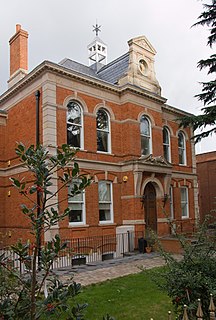
East Barnet Valley was a local government district from 1863 to 1965 around the town of East Barnet. It was partly in the counties of Hertfordshire and Middlesex until 1889, when the Middlesex part was transferred to Hertfordshire. It was renamed East Barnet in 1935.
Elstree and Borehamwood is a civil parish in the Hertsmere district, in Hertfordshire, England. Located approximately 12 miles (19 km) northwest of central London and adjacent to the Greater London boundary, it is an urbanised parish with suburban residential development, some open land and light industry. Elstree and Borehamwood is a recent renaming of the ancient parish of Elstree, covering the settlements of Elstree and Borehamwood. Formed in 1894 as the Elstree Parish Council, the local council is Elstree and Borehamwood Town Council. One of the most populous civil parishes in England, at the 2011 census it had a population of 37,065.
A liberty was an English unit originating in the Middle Ages, traditionally defined as an area in which regalian right was revoked and where the land was held by a mesne lord. It later became a unit of local government administration.

Elstree Rural District was a rural district in Hertfordshire, England from 1894 to 1974.
The Finsbury Division was one of four divisions of the Hundred of Ossulstone, in the historic county of Middlesex, England. The area of the Finsbury Division is now the core of modern north London. The other divisions were named Holborn, Kensington and Tower. Ossulstone hundred was divided in the seventeenth century, with each of the four divisions replacing the hundred for most administrative purposes.
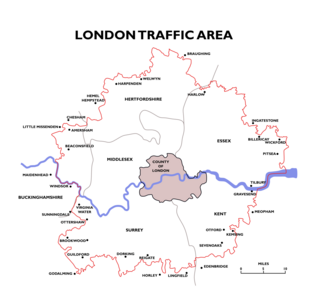
The London Traffic Area was established by the London Traffic Act 1924 to regulate the increasing amount of motor traffic in the London area. The LTA was abolished in 1965 on the establishment of the Greater London Council.
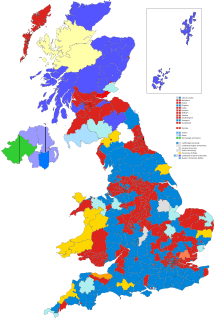
Barnet was a parliamentary constituency in what is now the London Borough of Barnet, which returned one Member of Parliament (MP) to the House of Commons of the Parliament of the United Kingdom.
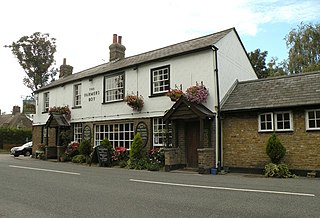
Brickendon is a village in the civil parish of Brickendon Liberty in the district of East Hertfordshire about 3 miles (4.8 km) south of the county town Hertford, and is served by Bayford railway station.
Hertfordshire was a county constituency covering the county of Hertfordshire in England. It returned two Knights of the Shire to the House of Commons of England until 1707, then to the House of Commons of Great Britain until 1800, and to the House of Commons of the Parliament of the United Kingdom from 1800 until 1832. The Reform Act 1832 gave the county a third seat with effect from the 1832 general election.

St Albans Town Hall, sometimes known as the Old Town Hall or The Courthouse, is a 19th-century building in St Albans, Hertfordshire, England. The building, which now accommodates the St Albans Museum, is a Grade II* listed building.

DanaisHundred was a judicial and taxation subdivision of Hertfordshire, in the west of the county, that existed from the 10th to the 19th century. It gave its name to the local government district of Dacorum. Danais was Latinised to Dacorum in 1196. The name Danais means the Hundred of the Danes and refers to its incorporation into the Danelaw for a period in the tenth century.
















